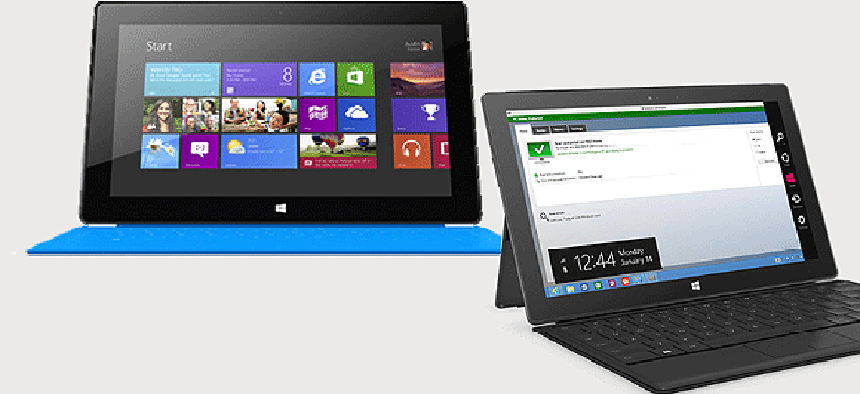RT vs. Pro: Which Surface is best for your agency?

The natural reaction is to go with the more powerful Pro, but the choice depends on how employees will be using the tablet.
The release of Microsoft’s Surface Pro tablet in February brought it into the picture for agencies considering issuing agency tablets or implementing “bring you own device” mobile strategies. Beyond the tablet format, however, the real question may be which of the two different OS versions available is the best fit for agencies.
There actually are four versions of Windows 8 right now — Windows 8 RT, Windows 8, Windows 8 Pro and Windows 8 Enterprise. Let's look at the whole tablet/operating system package, meaning the Surface RT and Surface Pro.
The Surface RT runs on a Quad-core Nvidia Tegra 3 processor, which is ARM-based. As such, it can’t run standard off-the-shelf software that typically is made for x86-based processors. However, there is a version of Office made for RT, and it comes pre-installed on the device. There are also many apps available at the Windows Store for RT.
Beneath the surface
|
|
Surface RT |
Surface Pro |
|---|---|---|
|
Processor |
Nvidia Tegra 3(ARM) | Intel Core i5 |
|
Office suite |
Office for RT | Full Microsoft Office |
|
Software |
Apps, games, news, productivity | Full applications (Photoshop, etc.) |
|
Office connectivity |
Remote Access | |
|
Hard drive |
32G or 64G | 64G or 128G |
|
Security |
Windows Defender, TPM chip | App Locker, Group Policy, TPM chip |
|
Weight |
1.5 pounds | 2 pounds |
|
Thickness |
9.3 mm | 13.5 mm |
|
Price |
$599 (64G) | $999 (128G) |
The processor and other components were chosen for their relatively low drain on power, which allows the RT to last much longer than its counterparts. Storage is a bit of an issue because the OS and system recovery tools take up about half of the base model’s 32G of storage space, leaving 16G. Alternatively, the 64G option leaves 45G of storage. This puts the starting price at $599 with the larger hard drive.
The Surface Pro has an Intel Core i5 processor, which of course is x86-based, and is much more powerful than the processor in the RT. Also, it can run the full version of Office, as well as any off-the-shelf software for Windows desktop computers. The OS also can be upgraded to Windows 8 Enterprise, which has additional network access and security features and thus might be useful for government agency settings. The much larger OS takes up even more room than RT, so the 128G hard drive option, which leaves 89G for the user, will provide needed room. This configuration starts at $999.
So, if an agency is considering the Surface, which version would be better? It comes down to answering some basic questions about how the tablet will be used.
- If battery life and portability are important, the RT could be the better option.
- If the user runs complex or demanding apps or needs a full version of Office, including full Remote Access, Pro is the better option.
- If e-mail access is the main requirement, the RT will be sufficient, though full domain access would require the Pro.
- And although both versions have device encryption, Trusted Platform Module and security software, the Pro adds Group Policy controls and the ability to interface with third-party controls.
For most government uses, the Surface Pro would probably be preferred. However, for jobs where employees are out of the office for hours at a time -- and can get by on apps optimized for tablets and limited network access -- the Surface RT likely has enough battery power to get the work done.
The Microsoft website has more information comparing the two Surface models.
NEXT STORY: Will IPv4 be obsolete sooner than expected?





